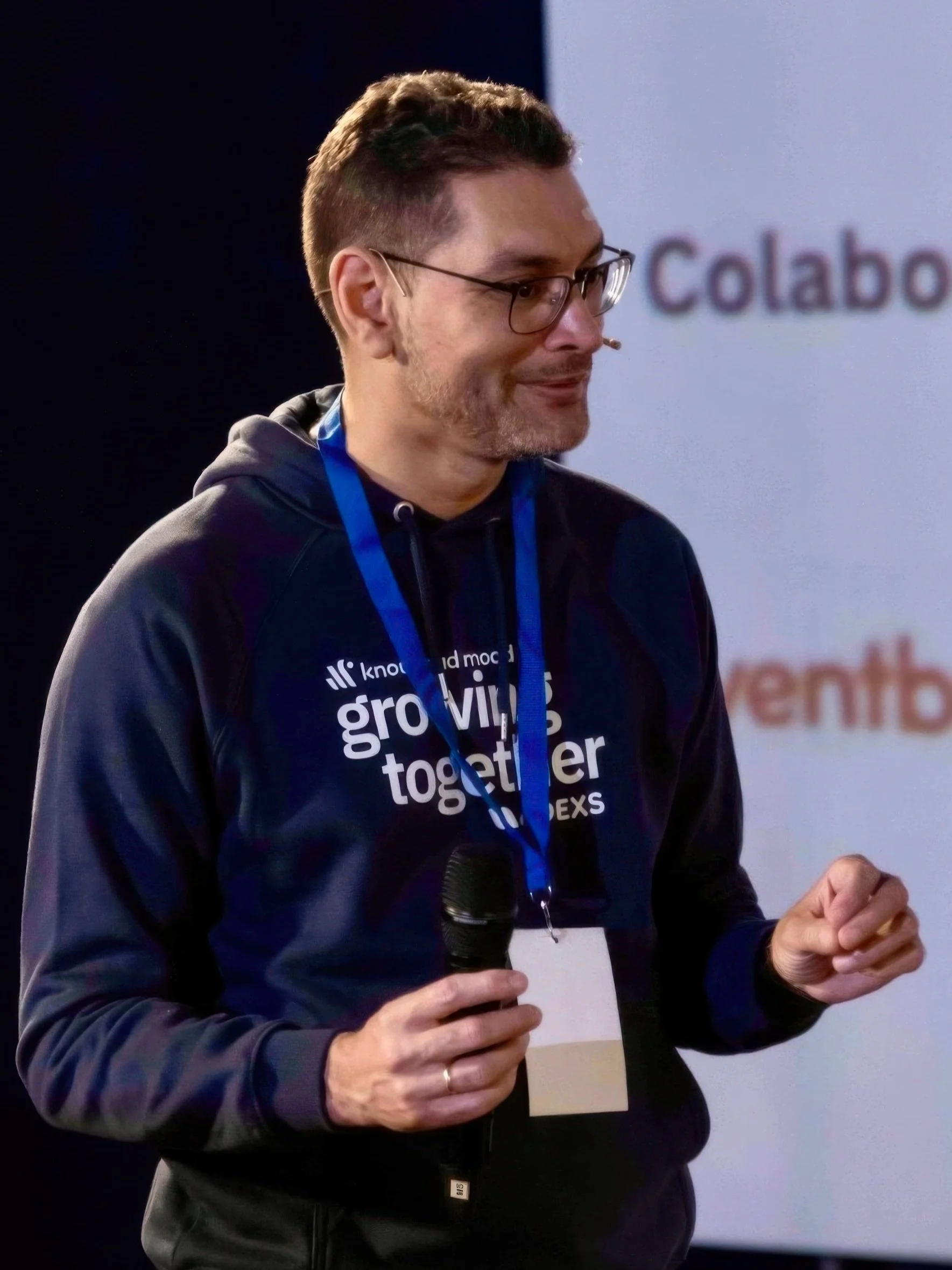HSD Models and Methods in Action
Balancing Cost Pressures & Innovation Opportunities
By William Guevara
In today's fast-paced business environment, organizations must balance operational cost management with the need for continuous innovation. This edition explores how HSD Models and Methods—including Patter Spotters, Interdependent Pairs, Finite and Infinite Games, The CDE Model, and Simple Rules—can help navigate this complexity. It uses the Adaptive Action framework (What? So What? Now What?) to explore how cost consciousness and risk aversion patterns impact innovation efforts.
What?
In my experience across various contexts—including internal coaching, operational leadership, and change initiatives—I’ve observed key patterns influencing organizational dynamics:
In general, I notice… “People play to avoid losing instead of to win, especially relevant when keeping track of their cost budget.”
In general, I notice… “a strong prioritization of running the business rather than growing the business with a new value proposition.”
In general, I notice… “a willingness to receive help on their agenda,” but “only if it doesn't represent a cost on their budget.”
I am really surprised that “people assume that metrics create behavior.”
I wonder “how different the behavior would be if the measurement system differed.”
Interdependent Pairs: Cost vs. Investment for Innovation
However, this structural tension also presents an opportunity for growth and innovation. While revenue growth requires investment in innovation, reducing operational costs to meet financial performance goals often restricts that investment. Finding a balance might pave the way for a more innovative and competitive future and instill optimism and hope for the future.
Finite vs. Infinite Games
A finite game frames cost control as the win condition—staying within budget ensures financial stability. However, survival in the infinite game requires continuous adaptation and innovation to ensure the company remains competitive. Balancing both perspectives is key to long-term success.
The CDE Model: Understanding the System
When the CDE (Containers, Differences, and Exchanges) Model is applied to such situations, it reveals:
Containers
Team members with operational availability
Leadership Roles in Business Development
Sales and Operational Management
Differences
Misalignment of annual objectives
Varied and sometimes conflicting departmental priorities
Exchanges
Informal dialogues across teams
Strategic planning sessions
Regular performance and alignment reviews
Simple Rules Guiding The System
Many organizations operate under a set of implicit simple rules, such as:
Assign every working hour to a cost center or client project
Monthly time reports are mandatory for all employees
Having people unassigned to projects represents an operational cost
These examples of rules are often observed in large organizations with established financial systems. While they ensure financial discipline, they also limit flexibility for innovation.
So What?
Addressing the Challenge: A New Revenue Stream
Current constraints within organizations can hinder resource allocation for innovation. However, alternative solutions might emerge by adjusting exchange patterns and leveraging inquiry. Some key questions guiding this inquiry process could include:
How can we shape a new measurement and reward system that fosters innovation?
What belief systems keep us stuck in a cost-centric mindset?
What collaboration models allow us to innovate without increasing direct costs?
How can we co-create with clients to generate new value streams?
What new simple rules can help us maintain financial discipline while fostering growth?
Inquiry as the Answer
While facilitating conversations with key stakeholders, the focus might be on navigating challenges and fostering an environment where inquiry could lead to strategic action. This might include:
Engaging with senior leaders to identify opportunities for reframing operational costs as investments.
Encouraging collaborative innovation models that integrate business development with available talent.
Testing new reward structures that align incentives with both cost efficiency and innovation.
Now What?
Taking Action: Designing New Simple Rules
A potential next step might involve prototyping a new set of simple rules that balance cost control with investment in new revenue streams. This process could include:
Forming a small core team (Container) to draft initial proposals for these new simple rules.
Engaging a larger group to refine and validate these rules through experimentation.
Testing implementation in select projects to observe emergent patterns and adapt accordingly.
Measuring Success and Adapting
Success will be determined by:
Increased alignment between cost management and innovation efforts.
Greater organizational willingness to explore new value propositions.
Improved collaboration between business development, operations, and sales teams.
Leveraging Human Systems Dynamics (HSD) methods, particularly Adaptive Action, enables an iterative approach. Every cycle of observation, inquiry, and action moves the organization closer to balancing cost efficiency and sustainable growth.
Next What?
As new simple rules come into effect, it will be important to monitor emerging patterns. The focus should remain on adaptability, ensuring that actions support both immediate financial performance and long-term competitiveness.
This approach aligns with a fundamental principle of complexity science: small changes in simple rules can lead to significant shifts in organizational behavior. Embracing this concept can help balance cost and investment to drive sustainable innovation.
What patterns do you see in your organization that could benefit from a change in the simple rules?
William Guevara is a Thought Leader specializing in Enterprise Coaching. With extensive experience in integral coaching and change management, he is dedicated to helping organizations thrive in the digital era. Holding multiple certifications—including Human Systems Dynamics Professional (HSDP)—William leverages his credentials to design and deliver impactful interventions that enhance the performance and potential of leaders, teams, and systems.
His work is not just a profession but a passion, combining coaching, complexity science, integral theory, and systems thinking to tackle today’s challenges and opportunities. His mission is to serve as a catalyst for a holistic life purpose that benefits others. William lives and works in Madrid, Spain.







